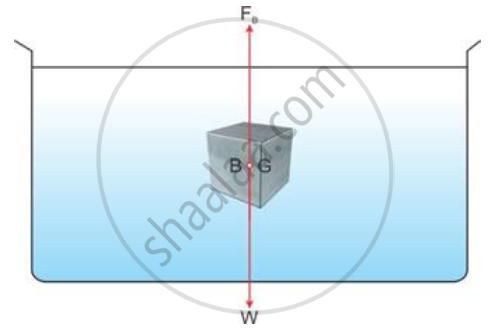Advertisements
Advertisements
Question
A body is held immersed in a liquid. (i) Name the two forces acting on the body and draw a diagram to show these forces. (ii) State how the magnitudes of two forces mentioned in part (i) determine whether the body will float or sink in liquid when it is released. (iii) What is the net force on the body if it (a) sinks and (b) floats?
Solution
(i) Two forces acting on the body are as listed below:
(a) Weight of the body (downwards)
(b) Upthrust of the liquid (upwards)

(ii) If the weight of the body is greater than the upthrust acting on it, the body will sink
If the weight of the body is equal to or less than the upthrust acting on it, the body will float.
(iii) (a) The net force acting on the body when it sinks is body's own weight.
(b) The net force acting on the body when it floats is the upthrust due to the liquid.
APPEARS IN
RELATED QUESTIONS
When a piece of wood is suspended from the hook of a spring balance, it reads 70 gf. The wood is now lowered into water. What reading do you expect on the scale of spring balance?
Why is the floating ice less submerged in brine than in water?
An iron nail sinks in the water while an iron ship floats on water. Explain the reason.
Why does a ship make of iron not sink in water, while an iron nail sinks in it?
A block of wood of volume 25 cm3 floats in water with 20 cm3 of its volume immersed in water.
Calculate:
(1) density of wood
(2) the weight of block of wood.
State the principle of floatation. What can you say about the average density of a ship floating on water?
Explain the following:
Icebergs floating in the sea are very dangerous for ships.
Differentiate positive & negative buoyant.
Describe the purpose, principle, and working of the Lactometer.
Assertion (A): Lactometer is used to check the purity of milk.
Reason (R): Lactometer measures the cream content of milk.
